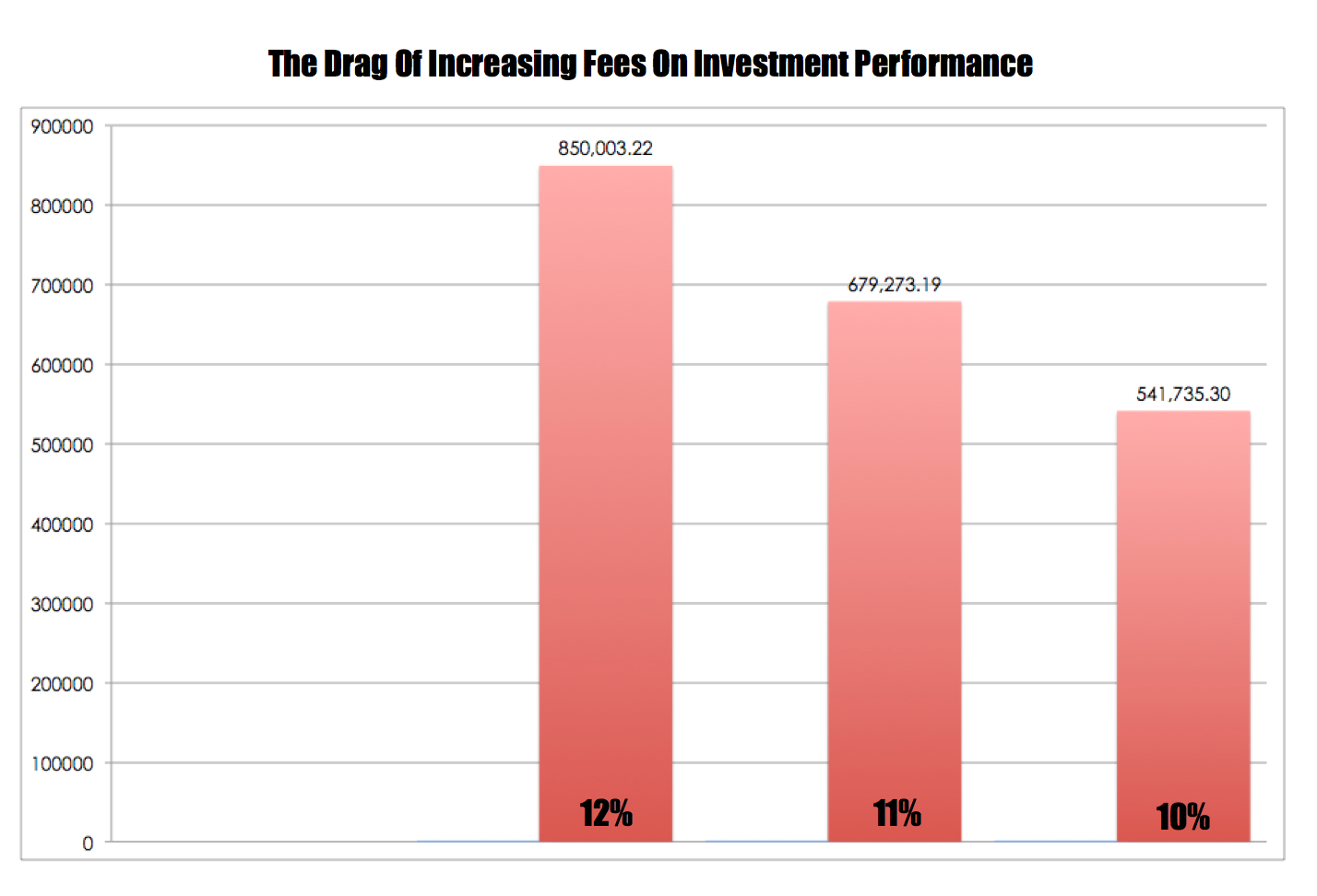I have been pondering the return to the bad old days of financial planning as advocated by the big banks and in my discussions with people they find it hard to grasp the impact of fees upon investment returns. I think this is due to a basic innumeracy among people and I believe this is something that is something that financial planners trade upon. To the lay person there appears to be little difference between charing 1% per annum and charging 1.5% the argument is that it is only 0.5% difference. However, over the life of a superannuation policy small differences can result in tremendously different outcomes.
The easy way to visualise this is to imagine that you have an investment that pays 12% per annum and to see the drag on performance by reducing the return that you would receive at the termination of the investment. For the purposes of this exercise i have make a few assumptions. I have assumed a starting balance of $50,000, with no additional investment and a term of 25 years. The 12% return can be assumed to be our return without any fees and we can step down from there by substituting a reduction in return for an increase in fees. So if we stepped the performance down to 11% we can see the impact of adding a 1% drag on performance in the form of a 1% per annum fee would be. Likewise, if we move to a 2% fee we can see the difference this would make in the terminal value of the investment.
What is immediately obvious is the a fee of 2% per annum has a tremendous drag performance. The investor loses $308,267.92 over the life of the investment. So whilst a shift in fees from no fee to 1% or 2% sounds insignificant it has a dramatic impact on the final value of the investment. It is this lack of understanding how much these fees have that financial planners are hoping for since no one in their right mind once presented with this sort of picture would opt for high fee paying options.






